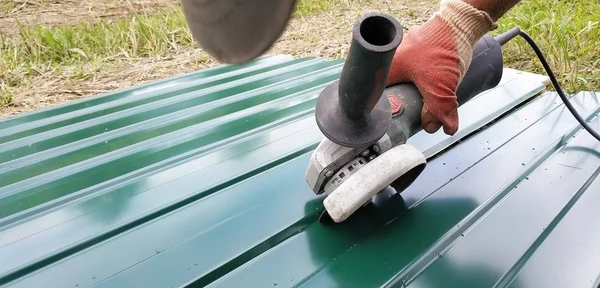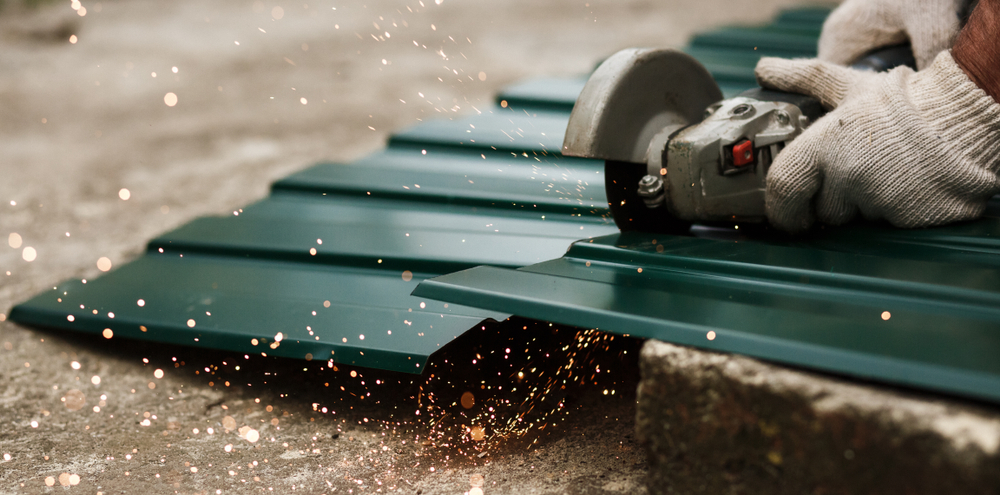Galvanized steel, a popular material known for its exceptional strength and resistance to corrosion, is commonly used in various construction, manufacturing, and DIY projects. Cutting galvanized steel may seem like a daunting task due to its tough outer layer of zinc coating, but with the right tools, techniques, and safety measures, you can achieve precise cuts without much difficulty. This article will walk you through the step-by-step process of cutting galvanized steel efficiently and safely, enabling you to tackle your projects with confidence.
Section 1: Understanding Galvanized Steel
Before diving into the cutting process, it’s crucial to grasp the properties of galvanized steel. Galvanized steel is regular steel coated with a layer of zinc, which protects the underlying metal from rust and corrosion. As such, cutting it requires special considerations to avoid damaging the zinc coating, which can expose the steel to potential corrosion risks.
Section 2: Safety First
Working with any metal, including galvanized steel, demands adherence to safety precautions. Here are some essential safety measures to follow before starting the cutting process:
- Personal Protective Equipment (PPE): Always wear appropriate PPE, including safety glasses, hearing protection, gloves, and a dust mask or respirator to shield yourself from metal shards and harmful dust.
- Ventilation: Perform the cutting in a well-ventilated area or use an exhaust fan to prevent inhaling zinc fumes during the cutting process.
Section 3: Tools for Cutting Galvanized Steel
Selecting the right tools is crucial for achieving clean and accurate cuts in galvanized steel. Here are some common tools used for cutting this material:
- Angle Grinder: An angle grinder equipped with a metal-cutting abrasive disc is a popular tool for cutting galvanized steel due to its versatility and ease of use.
- Circular Saw: With a carbide-tipped metal-cutting blade, a circular saw can provide straight cuts in galvanized steel.
- Nibbler: A nibbler is a specialized tool designed for cutting sheet metal and is an excellent choice for making intricate cuts.
- Plasma Cutter: Ideal for thick galvanized steel, a plasma cutter uses an electrically conductive gas to cut through metal with precision.
Section 4: Step-by-Step Guide to Cutting Galvanized Steel
Now, let’s walk through the process of cutting galvanized steel using an angle grinder, one of the most commonly used tools for this purpose:
Step 1: Prepare the Work Area
Ensure you have a stable and secure work surface to prevent accidents. Place the galvanized steel sheet on a workbench or sturdy sawhorses, making sure it doesn’t wobble during the cutting process.
Step 2: Mark the Cut Line
Use a measuring tape and a straightedge or square to mark the precise cut line on the galvanized steel. Double-check your measurements to avoid any mistakes.
Step 3: Secure the Steel
Clamp the galvanized steel sheet firmly to prevent movement during cutting. This will ensure a clean and accurate cut.
Step 4: Attach the Abrasive Disc
For your angle grinder, choose an abrasive disc for cutting metal. Affix the disc to the grinder following the manufacturer’s instructions.
Step 5: Don Protective Gear
Put on your safety glasses, gloves, and a dust mask to protect yourself from flying debris and zinc fumes.
Step 6: Start Cutting
Hold the angle grinder with both hands, and align the abrasive disc with the marked cut line. Gently squeeze the trigger to start the grinder and allow the disc to reach full speed before initiating the cut. Move the grinder steadily along the marked line, applying gentle and even pressure.
Step 7: Cool the Steel
Continuous cutting can generate heat that may damage the zinc coating. To prevent this, pause occasionally to allow the steel to cool down. This also helps in maintaining the cutting disc‘s efficiency.
Step 8: Check Your Progress
Periodically stop cutting and inspect the cut line to ensure you are on track. Make any necessary adjustments to maintain accuracy.
Step 9: Complete the Cut
Once you’ve cut through the galvanized steel, turn off the angle grinder and let the disc come to a complete stop before setting it aside.
Section 5: Safety Considerations while Cutting Galvanized Steel
- Avoid cutting through the zinc coating as much as possible to protect the underlying steel from corrosion.
- Always work in a well-ventilated area or wear a respirator to prevent inhaling zinc fumes.
- Regularly inspect your cutting tools and replace worn-out or damaged blades to ensure safe and efficient cutting.
- Take breaks during the cutting process to prevent overheating the steel and damaging the zinc coating.
- Be cautious of sharp edges and metal burrs after cutting; use a deburring tool to remove any rough edges.
Conclusion:
Cutting galvanized steel may require specific precautions, but armed with the right tools, knowledge, and safety measures, you can accomplish this task with ease. Remember to prioritize safety, choose the appropriate cutting tool, and take your time to achieve precise and clean cuts. By following this comprehensive guide, you’ll be well-equipped to tackle any galvanized steel cutting project effectively and confidently. Happy cutting!


